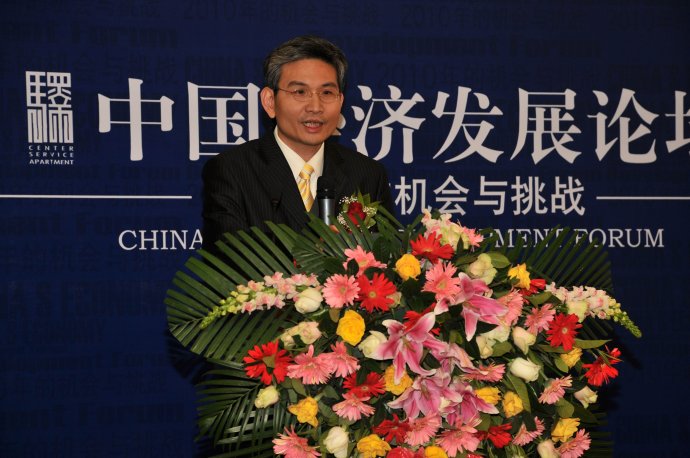石家庄英文简介
的有关信息介绍如下:
Sitting in the central south of vast North China Plain,Shijiazhuang City is located at the longitude of 114°29'E, and the latitude of 38°04'N.With the Capital-Beijing and Port City–Tianjin in the North, and Bohai Sea and North China Oilfields in the east, and the towering Taihang Mountains and the coal bases in China–Shanxin Province in the west, Shijiazhuang City was called “the Nation Capital's Suburbs”in the old times. Shijiazhuang City enjoyes convenient transportation conditions, called as “a gate from south to north and the throat from Hebei to Shanxi”.Shijiazhuang has two landforms-Taihang Mountains and North China Plain. The west part belongs to the middle section of Taihang Mountains, including Jingxing county and Jingxing mining area, the mountainous area of Pingshan, Zanhuang, Xangtang, Lingtang and Luquan, 50% of Shijiazhuang's total territory. The east part is alluvia-proluvial plain, including Xinle, Wuji, Shenze, Xinji, Jinzhou, Gaocheng, Gaoyi, Zhao County, Luancheng, Zhengding, Shijiazhuang, and the plain area of Pingshan, Zanhuang, Xingtang, Lingshou, Luquan, Yuanshi shi. The gradient from the West - Pingshan to Shijiazhuang is 1/1400-1/1200, and 1/1200-1/1400 from Shijiazhuang to the East - Xinji. Its dominant area is just in the contiguous area of the mountains of Shanxi and the sunken area of Bohai so that it is low in the East and high in the West, and its landforms are complex. The sea level elevation of Taihang Mountains in the West is 1000 meters or so, and on the east of Jingguang Railway it belongs to Huabei Plain. The platforms are mountain, small mountain, hill, basin and plain from west to east. The highest point within Shijiazhuang is Tuoliang Mountain, which has a sea level elevation of 2281 meters, and it is the fifth highest mountain in Hebei province. The eastern plain is classified as alluvia-proluvial plain in front of Taihang Mountains according to its origin that has an average sea level elevation of about 30-100 meters, and of which the Beipang village of Xinji is the lowest point, only 28 meters. (the following data provided by Municipal Urban Planning Bureau) inside the second-order loop of Shjiazhuang it is low in the Southeast where the sea level elevation is 81.5 meters, and high in the Northeast where the sea level elevation is 64.3 meters.Enveloped in the temperature continental monsoon climate, it's clearly distinguished between seasons with yearly average temperature of 14.2 centigrade, the coldest month of the year (January) at –2.9 centigrade, compared with the warmest (July) at 26.5 centigrade. The average precipitation is 570mm, sunshine hours more than 2200 and frost-free period more than 240 days.There are six main rivers in Shijiazhuang including Sha River and Ci River & Mudao Ditch in the north that are tributaries of Daqing River, and Hutuo River, Jiao River, Huai River and Ji River in the middle-south which are tributaries of Ziya River. The water area totaled 3.35 ten thousand square kilometers.The rivers'upper reaches have many tributaries and little vegetation with the torrent surging ahead so that the floods go up and down suddenly. After each river enters the plain, the channels are becoming wide, shallow and curving, so the river channels often change before the founding of our People's Republic. But after the founding of our People's Republic, under the leading of our party and government we do the flood control works on the upper reaches of each river, and on the lower reaches we renovate and reinforce the dike up to 500 kilometers so that we can prevent and control the flood more efficiently.Hutuo RiverHutuo River is one of the two tributaries of Ziya River. Originated from the northern foot of Wutai Mountains in Fanzhi county of Shanxi province, it winds through Xinding basin and Taihang Mountains, and then enters Pingshan county of Shijiazhuang from Yanzhuang of Yu county. With the Ye River joining near Huangbizhuang of Luquan city, it traverses eastwardly the outskirts such as Zhengding, Gaocheng, Jinzhou, Wuji, and then leaves Shijiazhuang in Shenze county entering Anping county of Hengshui city. The Shijiazhuang section of Hutuo River runs 201 kilometers, which is the biggest floodway in Shijiazhuang. The flood control standard is once in 50 years with the discharge of 3300 cubic meters per second, and its main dike in the north is the important flood control works of Hebei province. On the upper reaches of Hutuo River the large-scale reservoirs such as Gangnan reservoir and Huangbizhuang reservoir are built on its trunk streams and the middle-scale reservoirs such as Shiban reservoir and Xiaguan reservoir are built respectively on the Wendu River and Nandian River which are the tributaries of Futuo River.Jiao RiverJiao River is originated from the northern mountain of Luquan city and runs to Luancheng county with Jin River and the flood-relief channel of Shijiazhuang joining, and then leaves Shijiazhuang through Zhao county and runs to Ningjin county of Xingtai city with Beisha River and Zhulong River joining. The Shijiazhuang section of Jiao River runs 48 kilometers, which is not only the main floodway of Shijiazhuang city but also one of the main flood control works. The flood control standard is once in 12 years with the discharge of 665 cubic meters per second, and the standard of draining flood is once in 3 years with the largest discharge of 178 cubic meters per second. Bayi reservoir is built on its tributary of Zhulong River.Huai RiverHuai River is originated from Zhangshiyan in the southwest of Zanhuang county, and runs to Ningjin county of Xingtai city through Yuanshi, Gaoyi and Zhao county with the length of 79 kilometers and the discharge of 1258-2180 cubic meters per second. The middle-scale reservoir such as Baicaoping reservoir is built on its upper reaches.Ning RiverNing River is originated from Dashimen in the southwest of Zanhuang county, and runs through the south of Zanhuang, the southwest of Gaoyi, and then leaves and enter Baixiang of Xingtai city. It is 61 kilometers long with the discharge of 460-780 cubic meters per second. And the middle-scale reservoir such as Nanpingwang reservoir is built on its upper reaches.Sha RiverOriginated from Lingqiu county of Shanxi province, Sha River enters Shijiazhuang from Xingtang county, then runs across Xinle with Qu River, Huao River joining, and then goes to Dingzhou of Baoding city, which is one of the main southern branches of Daqing River. The large-scale Wangkuai reservoir is built on the branch in the domain of Quyang County. The large-scale reservoir such as Wangkuai reservoir and Koutou reservoir, and middle-scale reservoir such as Honglingjin reservoir are respectively built on Sha River, Hao River and Qu River.Ci River & Mudao DitchCi River & Mudao Ditch is originated from Tuoliang in the northwest of Lingshou county and runs through Xinle, Wuji, Shenze, and then enters Anguo county of Baoding city joining Sha River. The upper stream above Nanful River is called Ci River, and the low stream Mudao Ditch. The flood control standard is once in 20 years with the discharge of 1260 cubic meters per second. The large-scale reservoir such as Hengshanling reservoir is built on its upper reaches.



